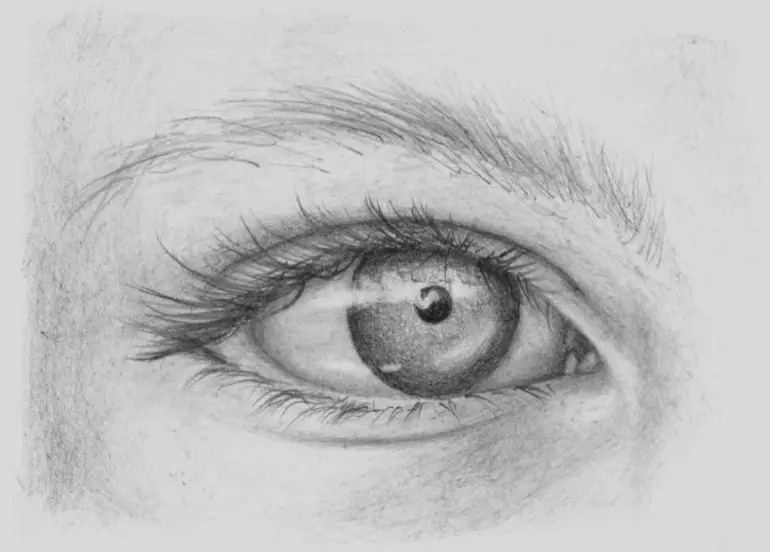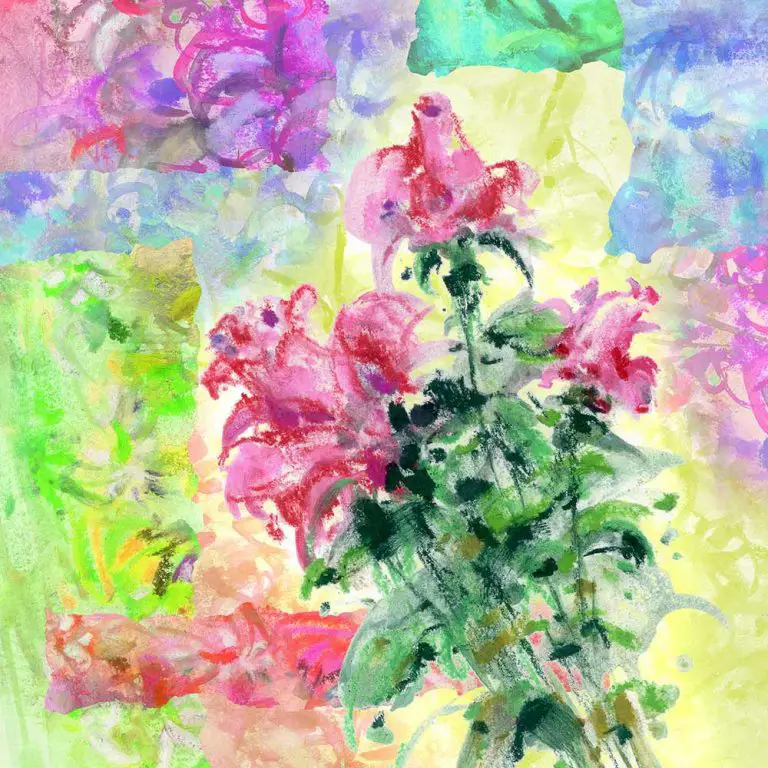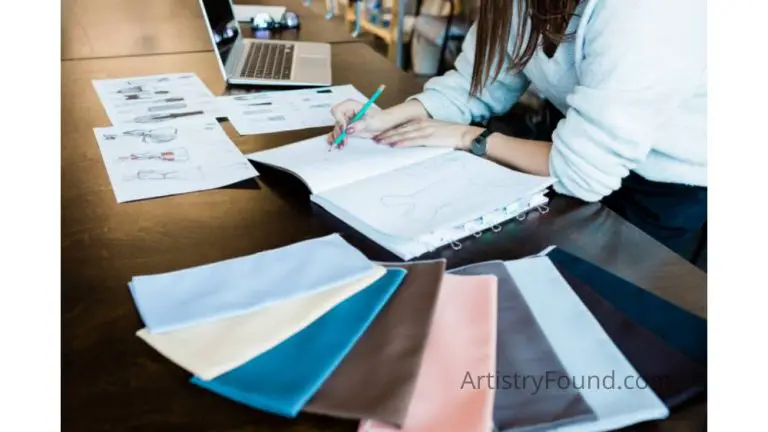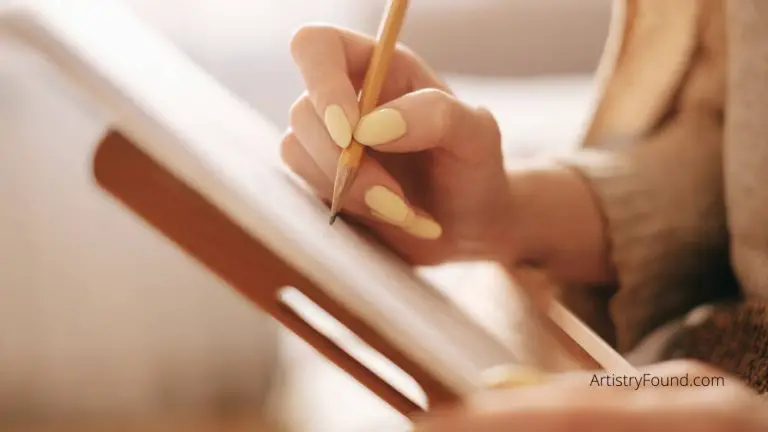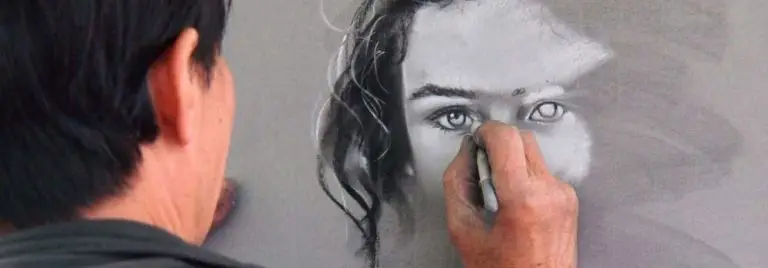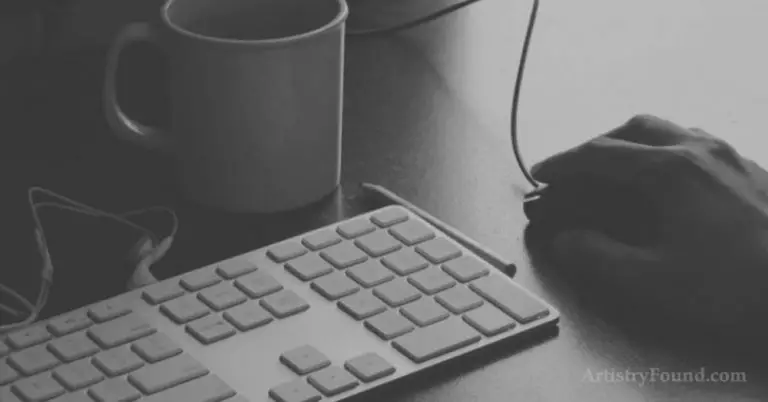Is Tracing Considered Art? (The TRUTH)
To trace or not to trace? Artists endlessly discuss the question of tracing and its place in the world of art. Is it okay to trace? Is it even legal to trace? Is tracing cheating? And is tracing considered art?
A tracing of an artwork is not considered art because it is not original and requires no artistic skill. Tracing is an artistic tool used to practice drawing skills or transfer images onto a canvas or wall. Selling a traced artwork by another artist is an illegal copyright violation.
Very few artists would consider a simple tracing of another artwork a piece of art in itself. However, the line blurs (yes, it’s a deliberate pun) when artists use tracing to create a new artwork or as the basis of an artwork in another medium.
Is this kind of tracing art? And is it legal to sell these traced artworks?
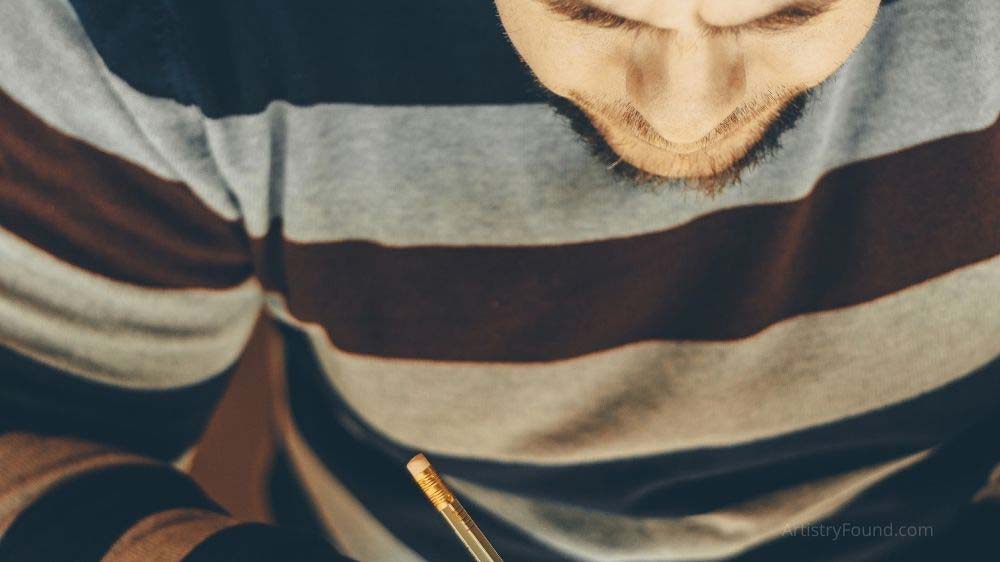
(This article may contain affiliate links and I may earn a commission if you make a purchase)
Is Tracing a Form of Art?
The question of whether something is art or not is a very personal one, to the extent that some would argue that art is whatever you say it is.
However, most definitions of visual art agree on the following characteristics of art:
- an object or artwork is produced: a painting, a sculpture, a sketch, an installation, a pottery bowl
- via an artistic process or technique: painting, drawing, welding, silk-screening, carving
- using the artist’s imagination and creativity: uniqueness, transformation, expressiveness, inspiration
- for a specific purpose: to be beautiful, shocking, interesting, emotive, elicit a response.
If we apply these characteristics to tracing, it is clear that tracing is not a form of art:
- an object or artwork is produced: a traced image
- via an artistic process or technique: copying
- using the artist’s imagination and creativity: imitation
- for a specific purpose: to reproduce an image.
Tracing is not a form of art in the same way as sketching, painting, or sculpting is because:
- original work is not created: art is a transformative process resulting in authentic artworks expressing the artist’s imagination or creativity. Tracing does not convey the artist’s unique point of view or perspective on the world.
- no artistic skill is required: tracing is a mechanical task, not a creative one, rather like a photocopying machine. When you trace, you don’t make artistic decisions which together create a work of art.
However, tracing can play a role in creating art and is a useful technical tool for an artist to create original work.
What Role Does Tracing Play in Art?
There are two main ways in which tracing is a valuable tool: to practice drawing and composition skills and to transfer original art from one form to another.
Tracing as Drawing Practice
Tracing is a helpful tool for learning how to draw, especially if you trace consciously and with the intent to learn how to draw what you are tracing. However, as a way of learning to draw, tracing does have limitations.
The Benefits of Tracing as Drawing Practice
- Tracing helps you get used to the process and medium: When students start drawing, it can be overwhelming to make decisions about how to hard to press, what kinds of lines to make, and even how to hold the pencil. Tracing takes away this anxiety and helps you make confident lines and tackle prominent, simplified contours and shapes, rather than the tentative details beginners tend to make. It is best to start by tracing simple images and work up to more complex drawings. It also helps that tracing paper is relatively cheap, and you don’t need specialized pencils to start practicing tracing.
- Tracing helps you understand structure: Tracing enables you to break down an image into its artistic components rather than its realistic parts. For example, drawing the human figure is challenging – Leonardo da Vinci spent years studying anatomy and analyzing how the human body works. Tracing images of the body helps give an idea of how the structures and parts of the body are connected but also reduces them to combinations of lines, shapes, and contours rather than what you imagine a leg looks like, for instance.
- Tracing helps you analyze good art: Tracing examples of masterful art allows you to explore and study another artist’s work and get a sense of your own ability and knowledge and what you still need to work on.
- Tracing helps you understand techniques such as foreshortening and perspective: Drawing from observation is far more challenging than it sounds – we tend to draw what we know is there or expect to see rather than what we can see. Foreshortening refers to how an object looks when viewed from one end. In other words, an arm doesn’t look long and straight but short and hidden. Similarly, linear perspective explains how objects further away look smaller than they really are. Tracing examples of these techniques help the student to understand them and avoid preconceptions.
The Limitations of Tracing as Drawing Practice
Tracing as a practice tool has limitations and restricts artistic development if overused.
- Always tracing instead of drawing freehand will limit your physical skill development, as it involves different mechanisms to drawing. Drawing develops your hand-eye coordination and fine motor skills and builds neural pathways and muscle memory in ways that tracing cannot.
- Tracing means you don’t learn artistic skills: Most artists spend years, even decades, learning about the artistic elements, such as line, shape, form, color, and proportion. Tracing can’t teach you how these elements work together.
- Tracing prevents you from learning to observe: Tracing means that you are always looking at the page, not at the world around you. An essential part of learning to be an artist is observing the world and interpreting it in your unique way. If learning to draw is your goal, practice drawing freehand and from observation rather than tracing.
- Another limitation of tracing is that it eventually becomes a crutch or habit. Continually using tracing as a shortcut limits your artistic development and may hamper your creativity. This is when tracing becomes cheating – you are cheating yourself.
- Tracing prevents you from analyzing your work: Because tracing is mechanical, you are not analyzing what you are doing. Mindless tracing means the artist doesn’t think about proportion, composition, form, structure, or perspective issues and thus doesn’t understand the reproduced image.
- Tracing results in a flat drawing: Because of not taking decisions around structure, form, and composition, traced pictures end up being bland and lacking in character. The unbroken lines of a tracing result in cartoonish outlines rather than a genuine three-dimensional representation.
Simply put, tracing is like riding a bike with training wheels – you have to remove the training wheels in order to learn to ride the bike properly.
Tracing is a Tool for Artists
Once you can draw well, tracing can be a valuable and convenient technique to speed up your work. Critics argue that tracing is lazy and takes away from the professionalism and skill used to create the artwork.
However, tracing has long been used by professional artists who know that the traced image is the bare bones or starting point and that the creative work of filling in form, shadows, textures, and colorwork, for instance, still has to be done. Tracing doesn’t replace the work of the artist as a photocopying machine would.
Artists have been using tracing techniques for centuries to transfer an original sketch onto another surface.
First, artists would create a sketch and then project the image onto a canvas to paint over it. Rembrandt used mirrors to help him do this.
Artists creating large murals would draw “cartoons” which they could then trace onto a larger surface to paint. It was common for an artist’s apprentices to help with this technical process.
Artist David Hockney has explored how artists such as Van Eck, Vermeer, and Caravaggio likely used an early form of the camera, the camera obscura, to project images onto their canvas and then trace and paint them to achieve extraordinary levels of realism.
Today, artists will often trace a photograph they have taken as the basis for a painting. Or use a digital projector to project an image onto a wall to paint a mural – just as David Hockney describes was done centuries ago.
These methods are not cheating or some kind of paint-by-numbers – they are helpful techniques to retain proportion and scale and do not diminish the final artwork in any way.
Tracing is also a way of speeding up the production of an artwork. Again, even in Renaissance times, an artist’s output determined their income, which is why artists had studios of apprentices to help them.
The same applies to modern professional artists, who use the tool of tracing to save time and increase their output. For example, tracing is very common in the comic book industry as the characters and their poses are repeated, and deadlines are tight.

Can You Sell Traced Art?
If you are tracing images as a hobby artist, a fan artist, or practicing your drawing skills, copyright questions don’t really matter. However, when you want to sell the artwork, ownership of the original image becomes an issue.
You can sell traced art if the image you traced belongs to you or is out of copyright. However, traced art is illegal if you violate another artist’s copyright, right of publicity, or trademarked design (logo).
When You Can’t Sell Traced Art
You cannot sell traced art if you don’t own the copyright, particularly if you want to reproduce a portrait of someone or a company’s logo.
Importantly, you can’t post images of your art online if the art violates someone’s copyright, even if you are not selling it. Posting online counts as reproducing an image, which is illegal.
If you want to publish or display your fan art, make it clear that it is fan art and credit the original artist and source.
If You Don’t Own the Copyright
It is both illegal and unethical to trace someone else’s work and then claim it as your own when you sell it.
If you want to use a different artist’s artwork (whether it is a painting, photograph, or sketch) as the basis for a new artwork you are making, you will have to get permission from them to do so and credit them, especially if you plan to make money from the artwork.
It is illegal is because the copyright on the original work does not belong to you. Copyright law prevents anyone but the owner of the copyrighted work from reproducing it in any form.
There are also legal questions about changing the original artwork, particularly if you adversely affect the original artist’s reputation. In this case, the copyright owner may sue for damages.
If it is a Portrait of Someone
It is also illegal and unethical to reproduce any image of someone else without their permission.
This legal right is referred to as the right of publicity. This right means that nobody may reproduce, sell, or exploit your image, likeness, or name without your consent.
If you want to trace a photograph you took of someone and make an artwork from it, you will need their permission.
If it is a Trademarked Logo
A company’s logo is trademarked, which means that you cannot trace or reproduce it and sell that image without their permission.
When You Can Sell Traced Art
If you created the original artwork or the original image is in the public domain, you can legally sell traced art.
If You Created the Original Work
It is commonplace for artists to work from photographs that they have taken. They often trace them and then use the tracing as the basis for a painting or drawing.
Using your own original photographs is legal because you own the copyright for the picture.
The same would apply if an artist were to trace any other original work they created – it would be legal as they own the copyright and may reproduce their own work.
If the Image is Out of Copyright
You can trace and sell images that are out of copyright – the image is said to be in the public domain.
A picture is out of copyright if the copyright on it has expired – so very old photos will no longer be under copyright laws. Copyright lasts for the lifetime of the artist, plus 70 years.
However, sometimes the artist’s estate retains the copyright, in which case copyright will be held for longer than 70 years.
If the Image is Copyright-free
There are many copyright-free images available; in other words, the image owner permits anyone to use the picture.
Some websites provide copyright-free images, mainly photographs.
Methods of Tracing
If you decide that you want to use tracing as a tool to develop your drawing skills or as a tool to produce artworks, there are various tracing methods available. These are the most common.
- Tracing paper: This is the tried and tested tracing method that involves laying a piece of tracing paper over an artwork and tracing it with a pencil. It helps to tape down the edges of the tracing paper so that it doesn’t move.
- A lightbox: A lightbox or light panel is a kind of table or box with a sheet of opaque perspex that allows you to lay your drawing paper or canvas over the original artwork and trace it as a light shines through from underneath. The light is adjustable, depending on the material you are using.
- A digital projector: This is an expensive piece of equipment, usually used by professional artists. You can project any image onto a wall or canvas, scaling the size up or down.
Conclusion
Although tracing is not considered an art form, it is a handy tool that art students and artists can use.
Tracing can help develop your drawing skills and help the professional artist sketch out the basics of a future artwork.
However, tracing someone else’s work can violate copyright law, especially if you plan to sell it, so stick to using our original artwork as a source for tracing.
Related Drawing Articles:
- Can I Be an Artist If I Can’t Draw? (Art Without Drawing)
- Can You Actually Forget How To Draw? (Problem Solved!)
- Can You Mix Soft Pastels with Water? (Here’s How)
References:
https://www.deviantart.com/nokari/journal/Tracing-IS-legal-Sort-of-214186997


